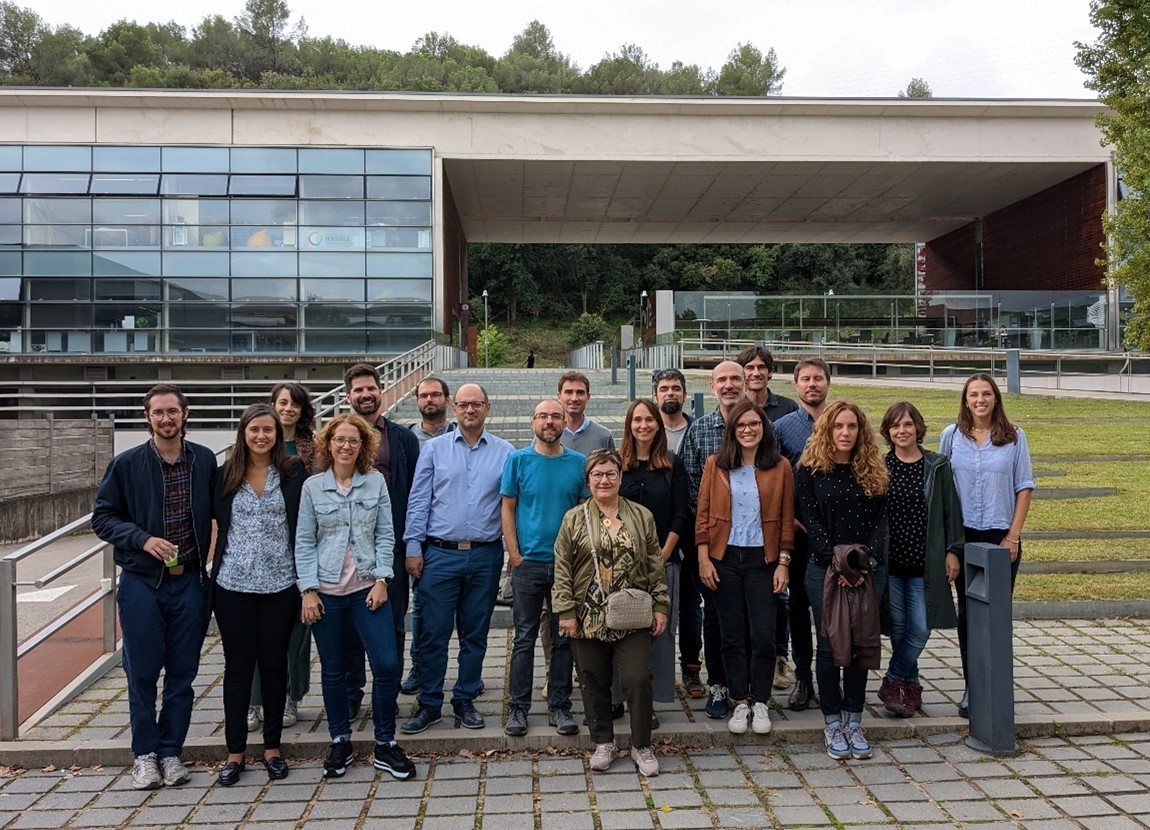Antissa demo site (HYDRO1) is participating in the new European project LIFE BIODAPH2O , whose kick off meeting was held on October 10 th and 11 th at the Science and Technology Park of the University of Girona, Spain.
BIODAPH2O – Eco-efficient system for wastewater tertiary treatment and water reuses in the Mediterranean region
- The LIFE BIODAPH2O project (LIFE21-ENV-ES-BIODAPH2O) is funded within the LIFE program
- It will have a duration of 42 months, ending in January 2026 and has a budget of € 2.1M
- Two pilot tests will be carried out with different configurations of the BIODAPH treatment system at Quart WWTP (Girona, Catalonia) and at Antissa WWTP (Lesbos, Greece).
- The project is coordinated by the University of Girona (UdG) and the partners are ACSA (Sorigué Group), Institute of Environmental Assessment and Water Research (IDAEA-CSIC), MINAVRA Techniki, National Technical University of Athens (NTUA), BETA Technological Centre (UVic-UCC) and Catalan Water Partnership (CWP).
LIFE BIODAPH2O is a demonstration project with the main objective of scaling-up and implementing an eco-efficient nature-based tertiary wastewater treatment (BIODAPH) at two demo sites located in two water-stressed regions of the Mediterranean area. This system will produce reclaimed water that will contribute to diminish discharges of pollutants to freshwater ecosystems and to promote agricultural reuse. The BIODAPH system, previously developed during the INNOQUA project, is based on the depuration capacity of biological organisms: water fleas (Daphnia), microalgae and biofilms for removing pollutants (nutrients, organic carbon, suspended solids, pathogens, heavy metals, emerging and priority pollutants, and micro plastics). This compact and low-energy consumption system does not produce sludge nor use chemicals for its operation.
The implementation of this system at Quart Wastewater Treatment Plant (WWTP), Spain, will reduce the impact of secondary wastewater discharges to the Onyar River, while improving the chemical and ecological quality of aquatic ecosystems in this river and allowing reaching the standards set in Water Framework Directive of the EC (Directive 2000/60/EC). In the case of Greece, the BIODAPH system will be implemented adjacent to the Antissa WWTP in Lesvos, which features modular units of the up flow anaerobic sludge blanket digestion, constructed wetlands, and a UV unit, put into operation as part of the HYDROUSA project. These modular treatments will allow BIODAPH system to be tested in different configurations to obtain reclaimed water in accordance with EU Regulation 2020/741 to irrigate 7,000 m2 of nearby agricultural land.
The main expected results / public deliverables of the project are listed below:
- Policy Assessment report with the policy and legislation assessment and contact with administrations (D2.1).
- Guidelines for setting-up and operating the BIODAPH reactor (design, construction, operation, testing and optimization), as well as the monitoring requirements to assess its efficiency (D3.2).
- Graphic report with pictures, schemes and maps of the two demo-plants (Spanish-site and Greek-site) and their main characteristics (D3.3).
- Results from the assessment of the demonstration plants in three different periods: after the first six first months (D4.1), after the BIODAPH demonstration plants optimized in each site (D4.2), and after long time operation at optimal conditions (D4.3).
- Sustainability assessment reports (D4.4 – Environmental impact assessment (LCA) and Techno-economic assessment (LCC) Intermediate report and D4.5 – LCA and LCC assessment final report).
- Impact of the BIODAPH on the ecological and chemical status of the river ecosystem after action (D4.6).
- Impact of BIODAPH reclaimed water on the agricultural productivity and quality after action (D4.7)
- Reports of key indicators collected in a matrix concerning the performance of the project (D4.8 & D4.9).
- Dissemination Plan, document describing a thorough plan for all dissemination activities of the project and providing dissemination guidelines to be followed by all partners (D5.1), and websites (D5.2).
- BIODAPH2O manual and guidelines with data sheet of design to implement the technology full-scale (D6.2).
Co-funded by the European Union Life Programme under Grant Agreement nº 101074191 – LIFE21-ENV-ES-BIODAPH2O








